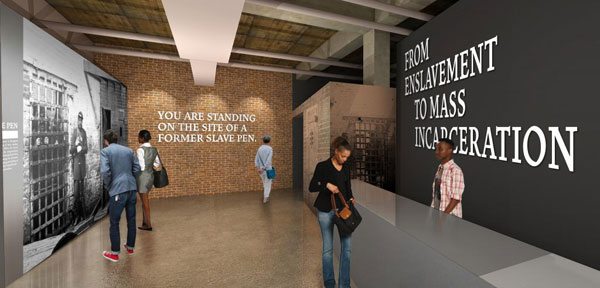
May 8, 2018; Slate
Last month, NPQ reported on the opening of the Legacy Museum: From Enslavement to Mass Incarceration and the National Memorial for Peace and Justice in Montgomery, Alabama. In September 2016, we reported on the long-awaited opening of the National Museum of African American History and Culture (NMAAHC). By design, these new cultural sites bear unflinching witness to some (though certainly not all) of the most disturbing realities of American history—slavery, lynchings, segregation, and many other deep injustices affecting African Americans. As more visitors experience these new places, other history museums and cultural tours also are making strides in sharing authentic narratives.
Writing for Slate, Ashton Lattimore cites “a growing wave of historical attractions aiming to look squarely at American history,” and comments on what this means to Black tourists, who may no longer have to endure tour guides referring to “slaves” as “servants” in order to avoid offending some tour group members (while of course offending others instead). She describes how she and her husband have experienced heritage tours in the past:
Through years of tours of historic colonial sites, antebellum-era plantation houses, and more, we’ve been that black couple in the background raising our eyebrows and keeping a running commentary of sotto voce corrective facts and cynical asides. Of course, that’s when we have the mental energy to visit these kinds of attractions in the first place. More often, we’re just not up for the whitewashing and the unchallenged Founding Fathers boosterism that pervades so many American history sites.
Sign up for our free newsletters
Subscribe to NPQ's newsletters to have our top stories delivered directly to your inbox.
By signing up, you agree to our privacy policy and terms of use, and to receive messages from NPQ and our partners.
Lattimore notes that for Black tourists, “who contribute more than $48 billion annually to the economy,” it can be exhausting to have a travel experience that you know is not authentic; it also can be uncomfortable to speak up and challenge a tour guide who is misrepresenting the truth, and equally uncomfortable not to speak up and set the record straight. But in recent years, she says, the trend is toward more balanced and honest narratives, however difficult the authentic stories may be for visitors.
Among the examples cited in the Slate article are these:
- A walking tour of Charleston, South Carolina, that acknowledges the city’s role as “the primary U.S. port of entry for enslaved Africans” and stops outside the Old Slave Mart museum, which opened in 2007.
- The Whitney Plantation in Louisiana, which opened in 2014 and focuses on the slaves who lived there, not the plantation owners.
- Manumission Tour Company in Alexandria, Virginia, which since 2016 has been offering walking tours that explore the history of urban slavery.
- The President’s House Site in Philadelphia, adjacent to the Liberty Bell Pavilion in Independence National Historical Park, which opened in 2010 and is “a partial reconstruction of George Washington’s presidential mansion that fully centers the stories of the black people he enslaved.”
- Monticello, Thomas Jefferson’s Virginia estate, which has “evolved to better reflect historical reality” and in 2012 opened an exhibit that “acknowledges the paradox of a self-proclaimed liberty enthusiast owning 600 people and gives visitors a window into their lives.”
Lattimore observes that these experiences can all be challenging, as they offer “not exactly what you’d consider tourist-friendly content.” Indeed, NMAAHC was designed with quiet spaces where visitors could process and reflect on some of the most difficult material presented in the museum’s exhibitions. But, as Lattimore concludes, “for black tourists and visitors, these places are valuable not only because they’re honest but also because they open up space for us to just be. No extra legwork, no correcting the historical record, no deciding whether to visit a museum based on how much we can tolerate being lied to on that particular day of our trip.”
“As I look toward planning my next trip,” he says, “it’s heartening to know that I can choose from more than a few places where honesty has found a foothold and visitors like me are no longer tasked with sifting out historical truths from expedient fictions.”—Eileen Cunniffe













